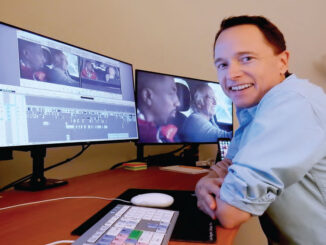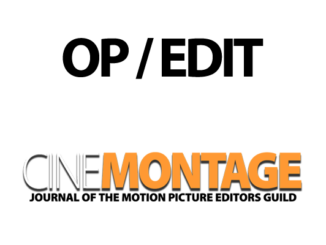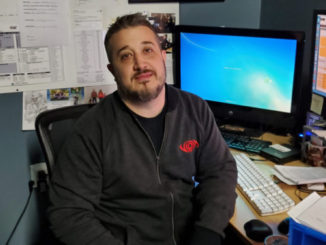
by Garrett Gilchrist • portraits by Wm. Stetz
How do you follow two blockbusters and the third highest-grossing film of all time? With a twist. That’s the Marvel Studios way. After two hugely successful Iron Man films directed by Jon Favreau and last summer’s record-breaking smash The Avengers, which featured Tony Stark (aka Iron Man) and other superheroes from the Marvel universe, the studio throws a change-up with Iron Man 3, which opens nationwide May 3 through Disney.
Shane Black (Kiss Kiss Bang Bang, 2005), a favorite writer-director of Robert Downey, Jr. (who portrays Stark), directs this time out, and Marvel switched picture editors as well, calling on its own team of post-production heroes to cut the film: Jeffrey Ford, A.C.E., and Peter S. Elliot, veterans of the studio’s The Avengers (2102), Captain America (2011) and Fantastic 4: Rise of the Silver Surfer (2007).
CineMontage caught up with the editors, and their first assistants Matthew Schmidt and John Dietrick, as they were finishing the film, which sees Stark/Iron Man pushed to his limit while battling the Mandarin (Ben Kingsley).
CineMontage: What can you tell me about the new Iron Man film?
Jeffrey Ford: It’s a character-driven film — like all the best Marvel movies are. You want Iron Man to face a really huge threat, both as a superhero and as a person, where he’s got to dig very deep to succeed.
Peter S. Elliot: Since Tony Stark is such a well-established character, we’re able to take more chances. We took a different look at his character in this film, something new to excite the audience.
Matthew Schmidt: Marvel’s really good at that — throwing in a new twist, making it different, leaving you wanting more, waiting to see the next one. They’re very smart filmmakers. They make it a pleasure to come back.
John Dietrick: The Marvel people put their heart and soul into this thing. And they keep raising the bar. We’re following The Avengers, and it’s a big deal to get this right. They’re perfectionists. They want the effects to be as realistic and breathtaking as possible, for the storytelling to be as good as it can be.
CM: What’s it like working with Shane Black as director?
JF: Working with Shane has been a real thrill for me. He’s written some of my favorite action films; Lethal Weapon is a classic. He’s very funny, great with dialogue and character development, and has a great ear and eye for comedic timing. He can adjust a couple of frames knowing the joke will play better.
Shane always finds that strange, interesting take on a scene that no one else would have. He is a totally unique voice and perspective, but not far afield from what Jon Favreau did in the first two films.
JD: Shane is full of ideas. Going from a smaller movie like Kiss Kiss Bang Bang to a giant blockbuster, he’s handled himself well.
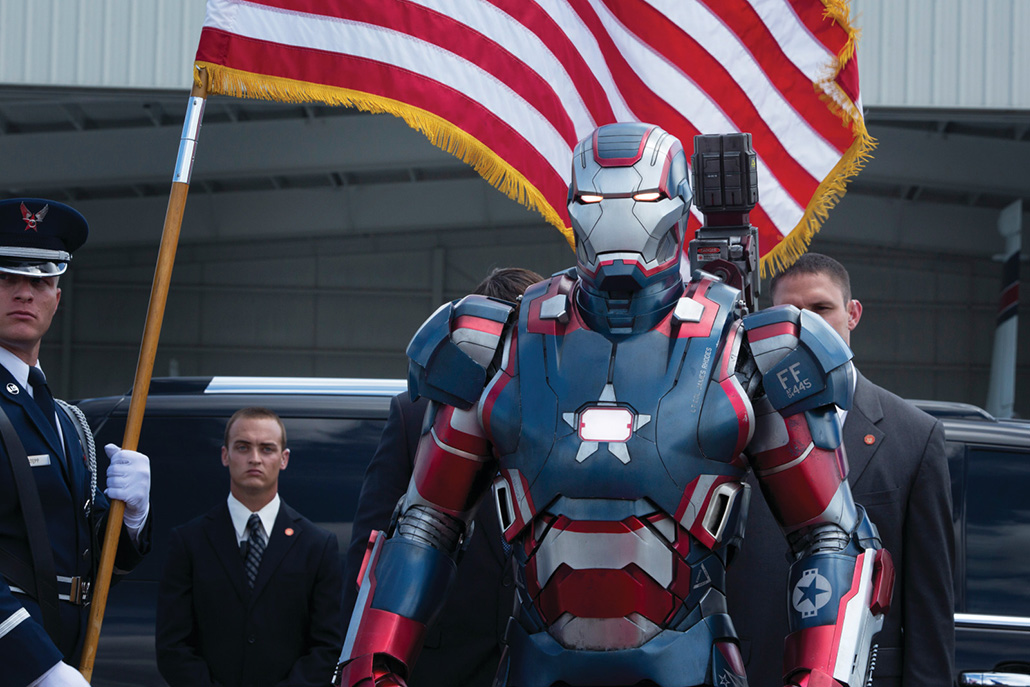
CM: How did you editors become involved with the Marvel superhero franchise?
PE: I edited Fantastic Four: Rise of the Silver Surfer with William Hoy, and edited effects on Fantastic Four [2005] and Daredevil [2003]. I met producer Kevin Feige and had known executive producer Victoria Alonso for years. From the moment Marvel Studios formed, I wanted to collaborate with them, but the timing never worked out. I loved the films they were making. When Jeff needed some help finishing up Captain America, I was thrilled for the opportunity.
JF: The Avengers had sounded really interesting, so I asked my agent to see if they needed a second editor. It turns out they needed someone for Captain America; they were in the middle of post and needed another editor. It was my first big visual effects movie, the sort of technical challenge I’d been wanting to tackle for a long time. I was very lucky. We hit it off and when The Avengers came up, they were looking for a second editor, with the awesome Lisa Lassek. I joined on and I feel like I’ve been doing it ever since.
CM: What was it like working on the Iron Man sequel when you hadn’t worked on the previous films in the series?
PE: Being a huge fan of the Iron Man films, I was not only honored to be working on the film but was also a bit nervous about living up to the previous heights of the iconic series. It was a huge responsibility to help tell the next chapter of the Tony Stark character. His arc through this film is so much different than the previous installments, and the way that Shane wanted to tell that story came from a completely different perspective.
JF: It was a great honor to be asked to work on an Iron Man film; after all, it’s the flagship of the Marvel cinematic universe. I felt I had a good handle on the character after working on The Avengers, and I knew the style and rhythms of the genre.
It’s important to know and respect the work that was done on the series by previous filmmakers, but not in any way be restricted by those previous choices. Shane’s style is different from Jon’s, but that’s a good thing — change is important. Sometimes you have to try new stuff with these superheroes; you need it to feel like a new take, especially when it’s the third in a series.
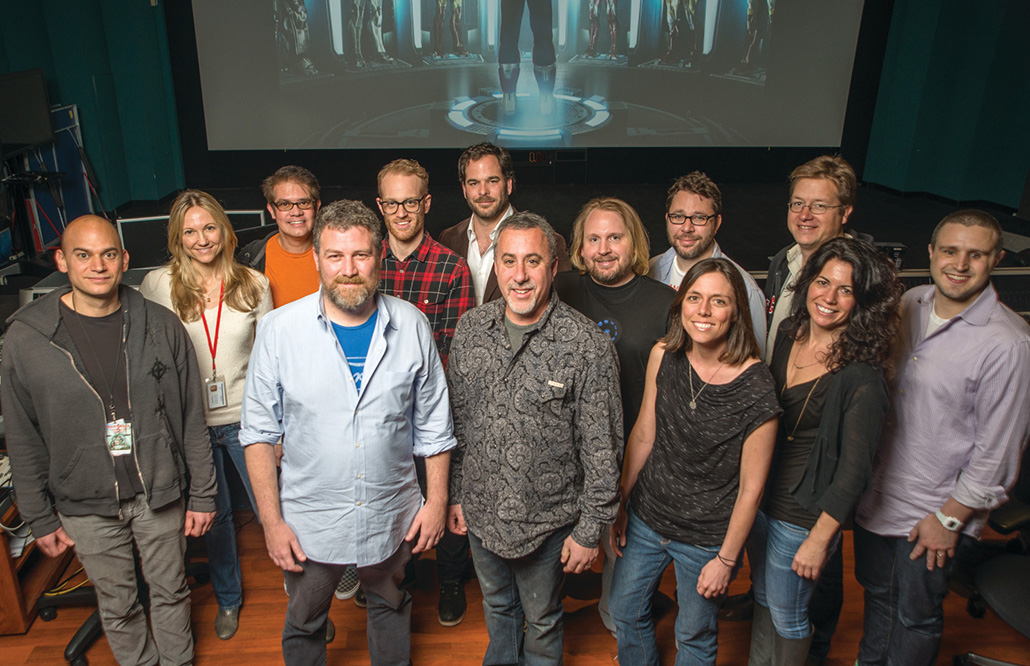
CM: How do you two divide up the editing duties?
PE: Jeff and I work very closely together. There’s no real ownership. I’ll cut a scene, and he might rework it with Shane, then I will. It’s very collaborative. We both do whatever’s needed.
JF: Peter’s been an incredible co-editor and partner. He’s terrifically talented and a huge asset to the movie.
CM: Do the first assistants have anything to add?
MS: Jeff is a fantastic editor who pours himself into it 100 percent. He doesn’t stop thinking about the film — ever. It’s an amazing learning experience watching him work, seeing someone with so much passion for this film.
JD: Peter’s constantly thinking of ways to make a scene better. He navigates personalities well, makes everyone comfortable and gets the best ideas out of them. Jeff is working 18-hour days, but stays upbeat, happy and smiling. He’s very in tune with the crew. They’re super-talented guys who come up with great ideas when they shouldn’t even be seeing straight.
CM: Tell me about the editorial team on Iron Man 3.
JF: We have incredible assistants, starting with Matt Schmidt and John Dietrick. They’re unbelievably bulletproof. They do everything we need and more. They know all the technical details and take care of so much for me that I feel a little bit guilty!
MS: My biggest job is to keep the editors going. They shouldn’t have to worry about the technical side. We troubleshoot. Things will go wrong. Hopefully nobody’s even aware, and everyone can continue to do his or her job.
PE: I’ve worked with John on the last couple of shows and worked with Matt on Hop [2001] and Daredevil. Without this crew’s crew, Jeff and I couldn’t do our jobs so effectively. We’ve had 10 months, start to finish. A film of this size, and in such a short time, requires a great team of people. Our visual effects editing crew had to be at the top of its game to deal with the sheer volume of work.
JF: George McCarthy is one of the great effects editors of our industry; Logan Breit is also an incredible talent. We work as a team and literally carry on a conversation all day to keep everyone working. Things have to happen so fast. As effects come in, you assess them as new shots — because what the effects artists do is so spectacular and so complex that it changes the nature of the cut.
“Sound on these films is so important; it grounds the visual effects to reality and makes the imagery come alive. The Avid has evolved dramatically over the past few years, becoming more stable. I couldn’t even imagine how you’d cut a picture like this on film in such a short time.” – Peter S. Elliot
MS: Robin Buday, our second assistant, is very computer-savvy. He understands the inner workings of the cameras, metadata, transfers, RAW files… With technology constantly changing, he’s invaluable. Kathleen Latlip, another assistant, completely takes the burden off us. With sound and music, she’s making sure everyone has everything he or she needs and that the mix is going fine.
JD: Matt’s been the point man, running the room. Our focus changes every hour. We’re talking about picture changes, then jumping to the DI at a moment’s notice.
MS: John is fantastic. He makes sure Peter’s taken care of, and then takes my work on his shoulders when I get too busy. We all rely on each other, and solve every problem together.
CM: With all the special effects, how much of the film is actually created in post-production?
JF: A lot of material is created in post: set expansions, greenscreen car comps and all the insanely beautiful, intense CG imagery. That said, almost everything starts with actual humans. The stunt performers do incredible things. It’s always best to use as much real photography as possible. But if it absolutely can’t be a person, we have previsualizations.
PE: Anytime you see Robert in the suit, it’s a visual effects shot. There are invisible effects too: vari-speeds to make something happen faster or slower, to sync the action within a frame, or to combine one take with another, so you’d never notice.
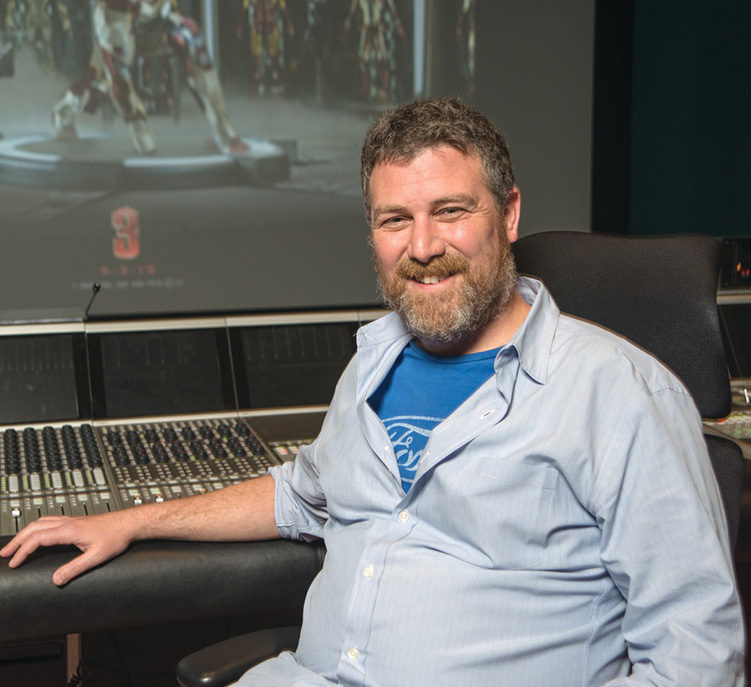
CM: What system are you using to edit the film?
MS: Media Composer 5.5; it’s a workhorse. There’s a lot of media coming in and you need something you can rely on. Ninety-some days of first unit, 60 days of second unit, pickups, 2,000-plus effects shots… We have 15 Avids connected on Unity. Everyone can access footage and work seamlessly, including Adam Kimmerlin and Bob Drwila, who are doing the 3D conversion.
PE: There are many different departments that depend on materials from Jeff and me. There’s a very large visual effects team working day and night, and any picture change affects them. We’re constantly talking them through changes. We’re all housed together at Todd-AO in Santa Monica, which makes communication much easier.
JD: The effects and editorial crews are in one hallway. This film’s so huge and everything’s happening simultaneously; I don’t know how you’d do it any other way. We can send things so quickly now, digitally.
JF: You had to make decisions more carefully when cutting on film. Now you can shuffle things around quickly and save thousands of versions. But editing’s still exactly the same as ever. You’re looking for authenticity in the performances, and a story that makes sense and is compelling and suspenseful.
CM: Tell me about the sound in the film.
JF: We have 16 tracks of audio: eight mono-centered and eight stereo pairs. There’s a lot of sound work — mixing and compositing, all the things that used to be confined to the very end of post-production — which we can do in the Avid now, as temporary, to see if it’s working, which is really wonderful. Our sound editor, Mark Stoeckinger at Soundelux, has been a great asset; he’s doing terrific work.
PE: Sound on these films is so important; it grounds the visual effects to reality and makes the imagery come alive. The Avid has evolved dramatically over the past few years, becoming more stable. I couldn’t even imagine how you’d cut a picture like this on film in such a short time. We cut in temp music and sound effects and make the movie sing at the very beginning of the process.
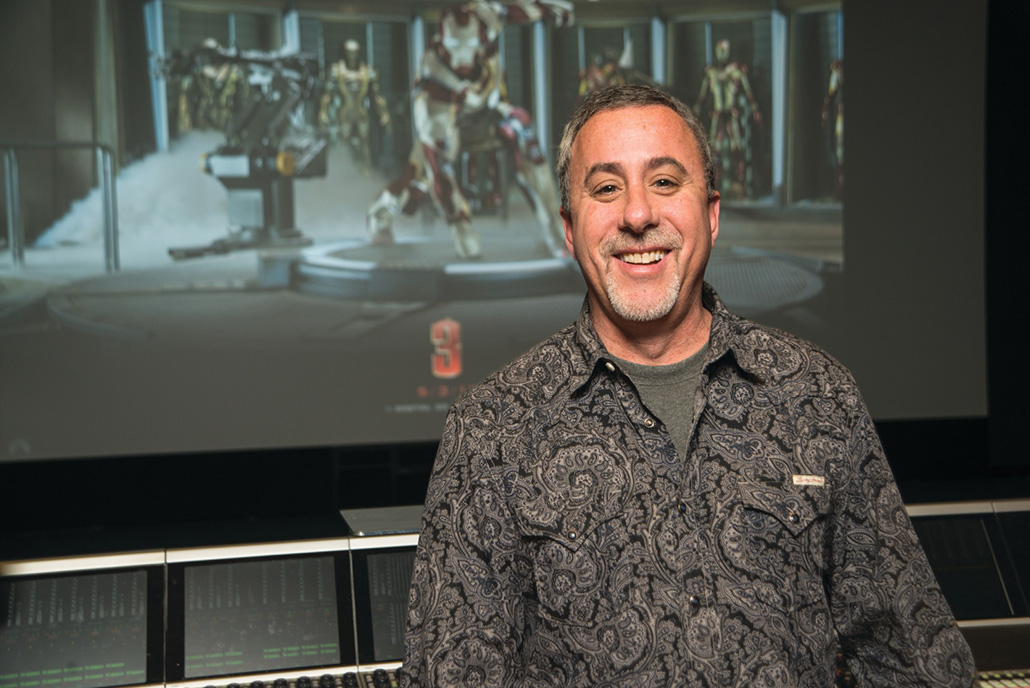
CM: What would you say were your main contributions as editors to Iron Man 3?
JF: Our job is to serve the director, and get the movie he or she is trying to make. It’s not our film; it’s Shane’s. This is a very important movie for the people at this studio, and they’re all very involved.
I believe audiences go to movies to hear the unique voice of a director and, by extension, the actors. I want to amplify the director’s voice as best I can, and get that vision onscreen. Sometimes that means disagreeing, if I think something could be better. Making movies is an ongoing conversation. Directors need someone to talk to, and editors need to be vocal.
PE: We want to flesh out the characters, make them enjoyable, and hopefully tell a story that’s meaningful, so people leave the theatre talking about it and have an experience they’ll remember.
JD: Hopefully we’ve done Marvel proud, and made the fans happy.
MS: You work so long and invest so much, and come crashing down when you’re done. But the reward is seeing people enjoy the film.



